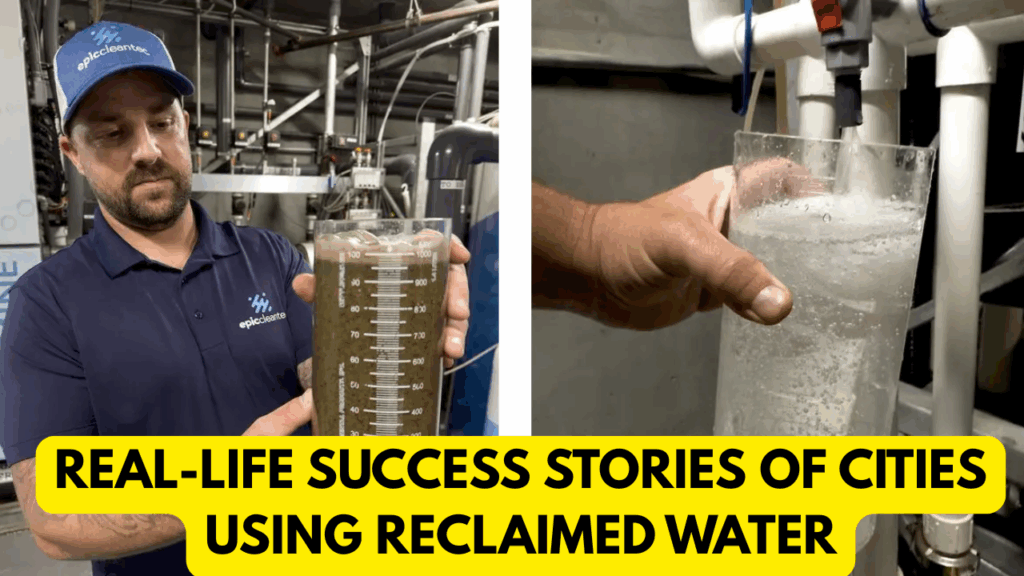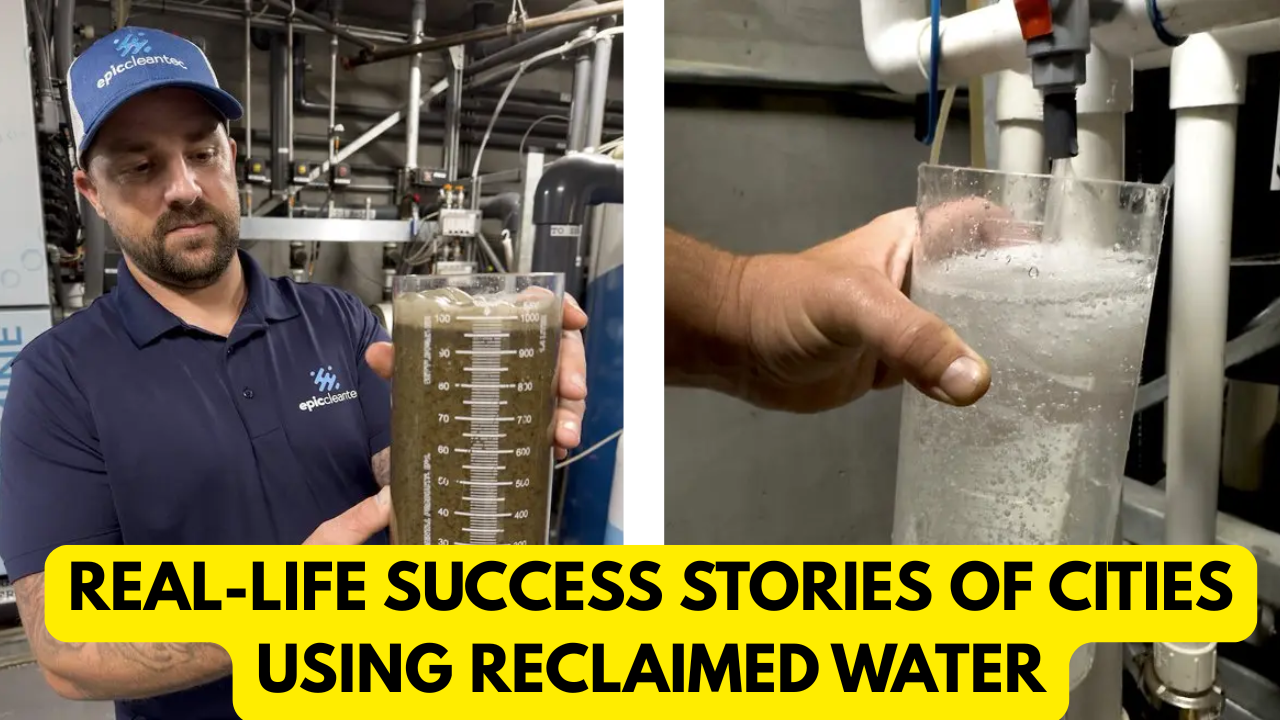
Water scarcity and climate change have pushed cities worldwide to rethink how they manage water resources. One of the most innovative solutions has been reclaimed water—treated wastewater that is safely reused for irrigation, industrial purposes, and even drinking. Far from being just a theory, reclaimed water has already been adopted successfully in many cities, showing how recycling water can secure a sustainable future.
This article explores real-world success stories of cities leading in water reuse, their achievements, and what the world can learn from them.
Why Cities Are Turning to Reclaimed Water
- Water scarcity: Rapid urbanization and population growth are increasing freshwater demand.
- Environmental protection: Reusing water reduces pollution in rivers and oceans.
- Cost savings: Treated wastewater is often cheaper than desalination or importing water.
- Sustainability: Ensures long-term water security in drought-prone regions.
Real-Life Success Stories
1. Singapore: NEWater – A Global Benchmark
Singapore, a small island nation with limited freshwater, has become a global leader in water recycling through its NEWater program.
- Produces high-quality recycled water using microfiltration, reverse osmosis, and UV disinfection.
- NEWater meets 40% of Singapore’s water demand, projected to hit 55% by 2060.
- Used for industries, cooling towers, and indirect potable supply.
Lesson: Advanced technology + strong public communication build trust in recycled water.
2. Orange County, California: Groundwater Replenishment System
Orange County operates the world’s largest water purification system for indirect potable reuse.
- Treats 130 million gallons per day (enough for 1 million residents).
- Uses microfiltration, reverse osmosis, and advanced oxidation to produce drinking-quality water.
- Recharged into underground aquifers, blending naturally with groundwater.
Lesson: Large-scale infrastructure can provide sustainable, safe drinking water for millions.
3. Windhoek, Namibia: Pioneer in Direct Potable Reuse
Since 1968, Windhoek has operated the world’s first direct potable reuse plant.
- Treats wastewater directly for drinking use without blending.
- Supplies 35% of the city’s drinking water needs.
- Proven success even in one of the world’s driest regions.
Lesson: With strict safety standards, reclaimed water can directly support urban populations.
4. Perth, Australia: Water Banking with Aquifer Recharge
Facing declining rainfall, Perth invested heavily in water recycling.
- Uses treated wastewater for aquifer recharge—injecting it underground for storage.
- Provides a climate-resilient backup water supply.
- Strong focus on community education to build trust.
Lesson: Recycled water can act as a natural “bank account” for future water use.
5. Israel: Agricultural Water Reuse
Israel reuses about 90% of its wastewater, making it the global leader in agricultural water recycling.
- Treated water irrigates orchards, vineyards, and crops.
- Advanced nutrient management improves soil fertility.
- Reduces reliance on freshwater in a desert climate.
Lesson: Recycled water is a vital tool for food security in water-scarce regions.
Table: City Success Stories in Reclaimed Water
| City/Country | Reuse System | Key Outcome |
|---|---|---|
| Singapore | NEWater (Indirect Potable & Industrial) | Supplies 40% of national demand |
| Orange County, US | Groundwater Replenishment System | Provides drinking water for 1 million residents |
| Windhoek, Namibia | Direct Potable Reuse Plant | 35% of city’s drinking water from wastewater |
| Perth, Australia | Aquifer Recharge Program | Climate-resilient water banking |
| Israel | Agricultural Reuse | 90% wastewater reused for irrigation |
Benefits of Reclaimed Water in Cities
- Reliable supply: Less vulnerable to droughts and climate change.
- Environmental protection: Reduces discharge into rivers and oceans.
- Economic stability: Lowers the cost of water imports and desalination.
- Public trust: Proven safe with strong monitoring and transparent systems.
Overview Table
| City | Challenge Faced | Solution with Reuse | Impact |
|---|---|---|---|
| Singapore | Limited land & rainfall | NEWater advanced treatment | Water self-sufficiency |
| Orange County | Growing population, shortages | Groundwater recharge | Safe indirect potable reuse |
| Windhoek | Extreme aridity | Direct potable reuse plant | Drinking water security since 1968 |
| Perth | Declining rainfall | Aquifer recharge system | Long-term storage & resilience |
| Israel | Agriculture in desert climate | Wastewater irrigation reuse | Food and water security |
Final Thoughts
The success stories of Singapore, Orange County, Windhoek, Perth, and Israel show that reclaimed water is no longer just an emergency solution—it is a long-term necessity. From drinking supplies to agriculture, these examples prove that water reuse is safe, practical, and sustainable.
As more cities face climate stress and water shortages, adopting reclaimed water strategies could be the difference between scarcity and resilience. With the right technology, infrastructure, and public awareness, recycled water has the power to transform the future of urban living.
FAQs
Q1: Which city was the first to use reclaimed water for drinking?
Windhoek, Namibia, pioneered direct potable reuse in 1968.
Q2: How much of Israel’s wastewater is reused?
About 90%, mainly for agricultural irrigation.
Q3: Can reclaimed water really be safe for drinking?
Yes—cities like Orange County and Singapore prove it is as safe as conventional water supplies.

